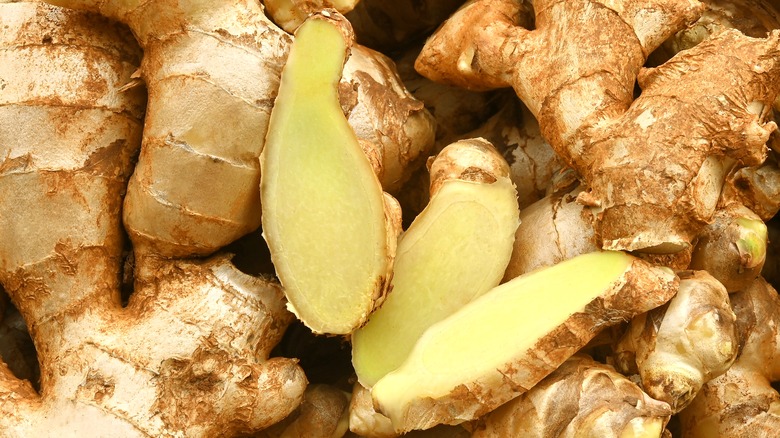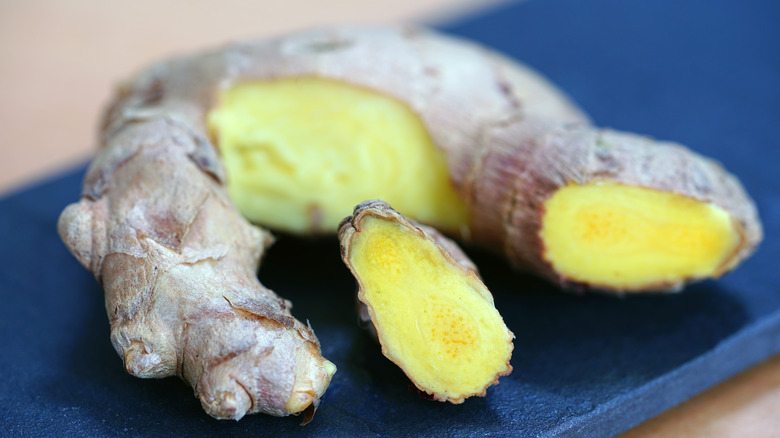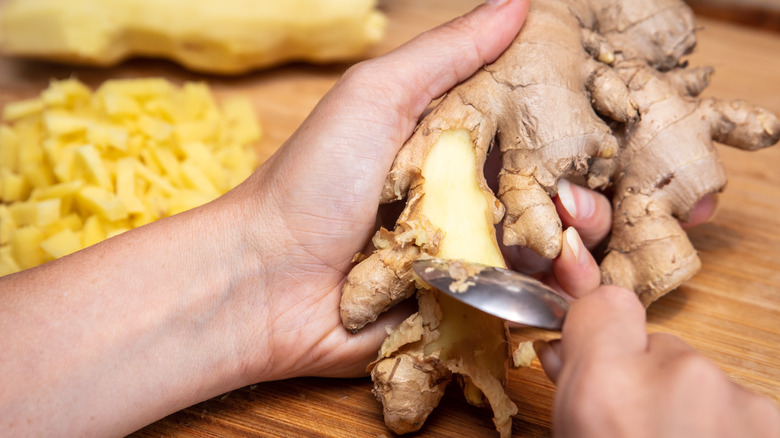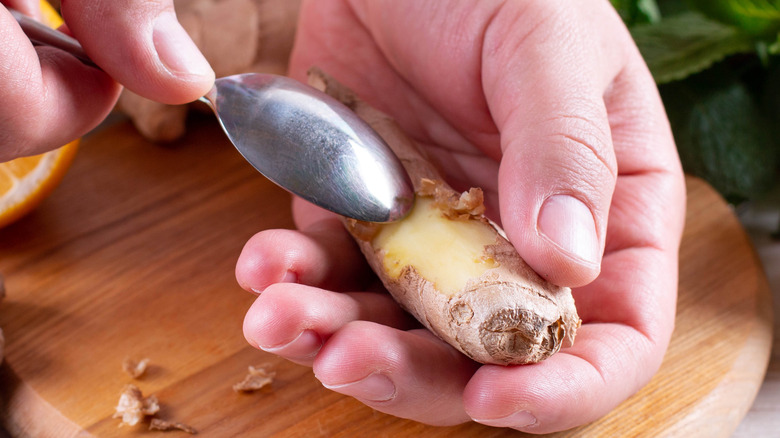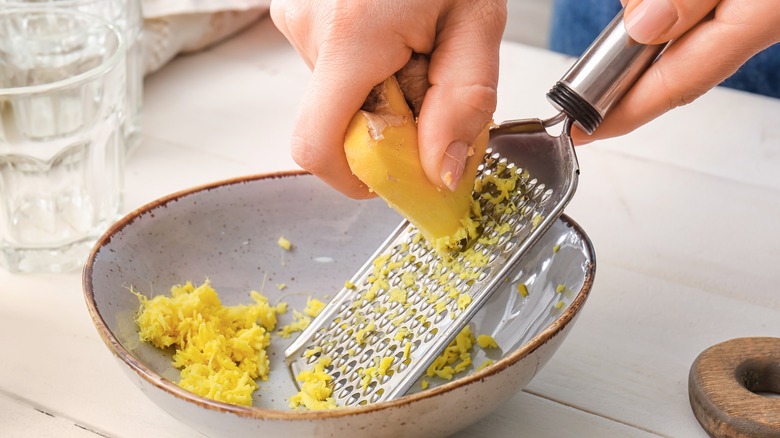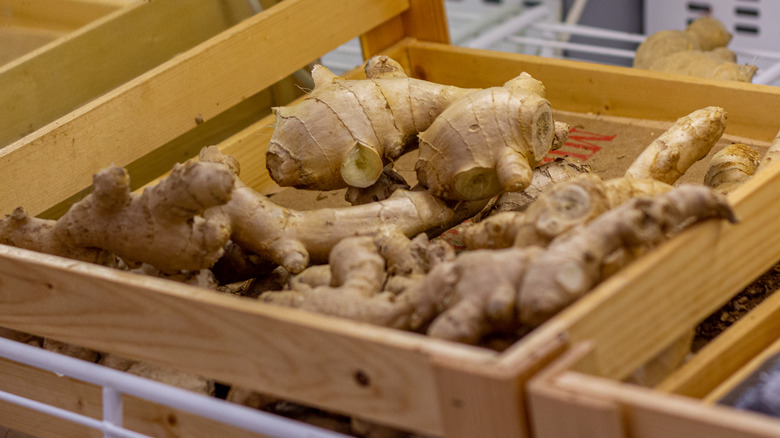How To Peel Ginger With A Spoon
Fresh ginger is a culinary flavor bomb that can be added to savory stir-fries or sweet baked goods, or even brewed in tea. In addition to delivering an earthy, warm spiciness to dishes, the pungent root has many purported medicinal benefits, according to Healthline, including quelling nausea, aiding in digestion, and reducing inflammation, all reasons why it has been used in Eastern medicine for centuries.
Ginger can be found ground, dried, and frozen; however, it's most pungent when purchased fresh, which does entail some preparation at home in order to cook with it. The knobby root is coated in a papery skin, which gets more fibrous as the plant matures. Although it's safe to consume and unnecessary to remove if you have organic, young ginger root, what is typically found at the supermarket is commonly peeled to deliver the best texture.
Since ginger's outer layer is very thin and the root has lots of nodes (like an old tree), relying on a vegetable peeler or paring knife will waste too much of the ginger's flesh. Instead, reach for a spoon to get the job done more efficiently. With minimal effort, mess, and waste, a spoon is the better tool to peel ginger for any recipe, whether you need it grated or julienned.
Break off only what you need
Prepare the amount of ginger needed for your recipe by snapping off one of the root's gnarly knobs. Although its diameter is a factor, each 1-inch piece of ginger roughly equals 1 tablespoon of grated spices. If you don't cook with ginger often, you can break off what you need at the supermarket instead of buying the entire root to bring home. For the best flavor, peel only what you need for your dish, and store the rest in the refrigerator to use later.
Grab a spoon as your peeling tool
As mentioned, a spoon is the best way to prepare ginger for cooking, as it allows you to maintain most of its flesh. You can use an ordinary teaspoon or tablespoon, with which you'll use its side to scrape the ginger's exterior. Using minimal pressure, start at the top of the root and draw the spoon downwards, rubbing off the skin in curls. Since there's no danger that the blunt-edged tool will slip and cut you (unlike using a vegetable peeler or knife), it's safe to work towards your hand holding the ginger.
Use the spoon's tip to get the corners
Although it may seem tedious, it's unnecessary to discard the smaller nodes that have grown from the root; they are very flavorful components, too. To access these parts, use the tip of the spoon to get inside all of the tiny nooks and crannies and peel away the brown paper-like skin for these areas, too
Cut your fresh ginger
Once the ginger's skin has been removed, then use a chef's knife to slice off any yellow flesh that has dried out. This commonly occurs where the root was previously broken and exposed to air. To julienne the ginger for stir-fries, slice the peeled ginger against the grain, stack the pieces like a deck of cards, and thinly slice them into matchsticks. Use a box grater or microplane to grate fresh ginger so the fibrous root keeps dressings, sauces, or marinades smooth.
Storing fresh ginger
Uncut fresh ginger can be left whole on the kitchen counter at room temperature for up to three weeks. Once cut, the remaining root should be wrapped in plastic wrap and stored in a resealable container in the refrigerator for up to one month. Place whole or pureed ginger root in the freezer for extended storage time, of up to four months.
Discard ginger once the skin has wrinkled or the root has changed its color, smell, or texture. If it has an off smell or mushy parts, it's time to replace it and start the process over again.

